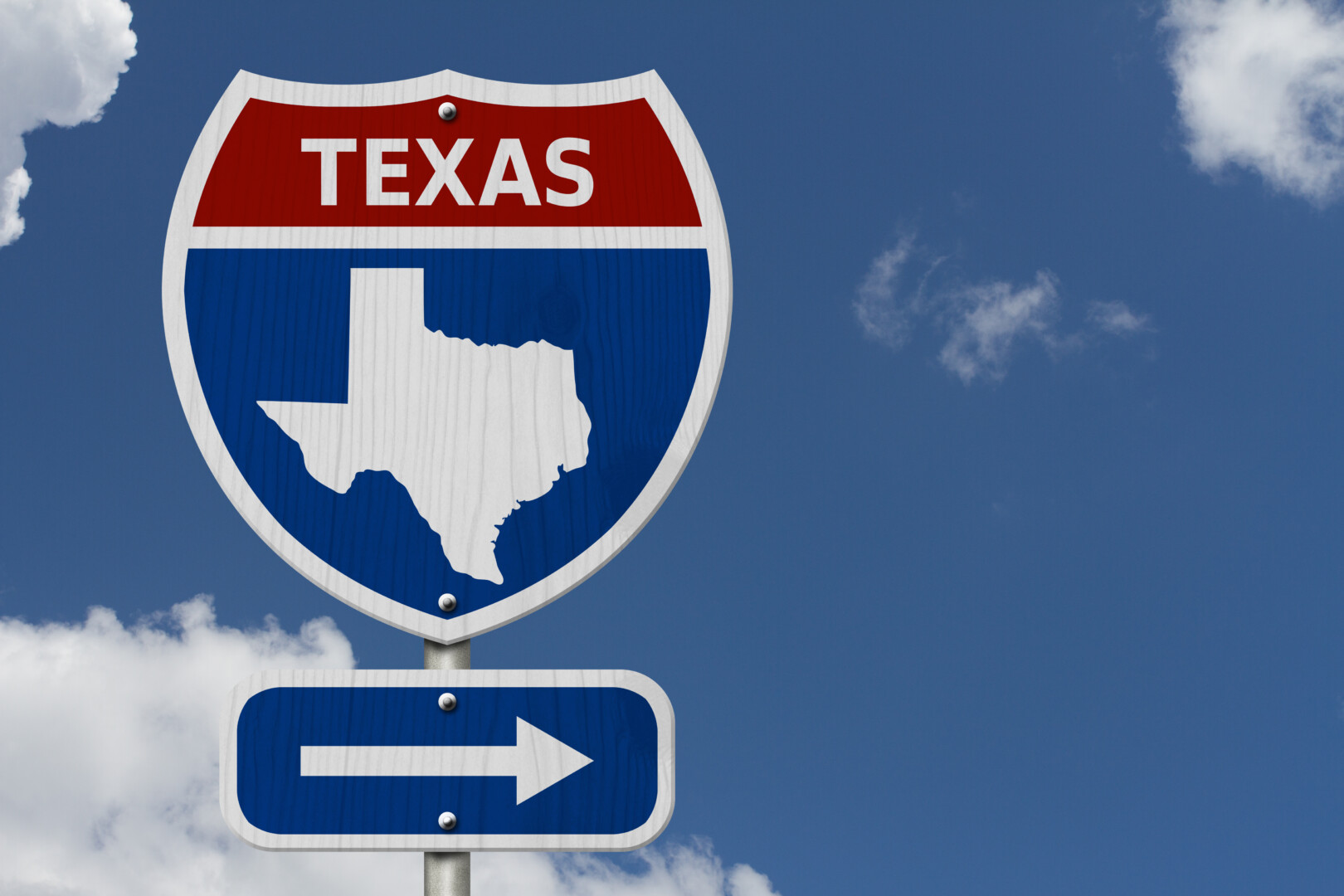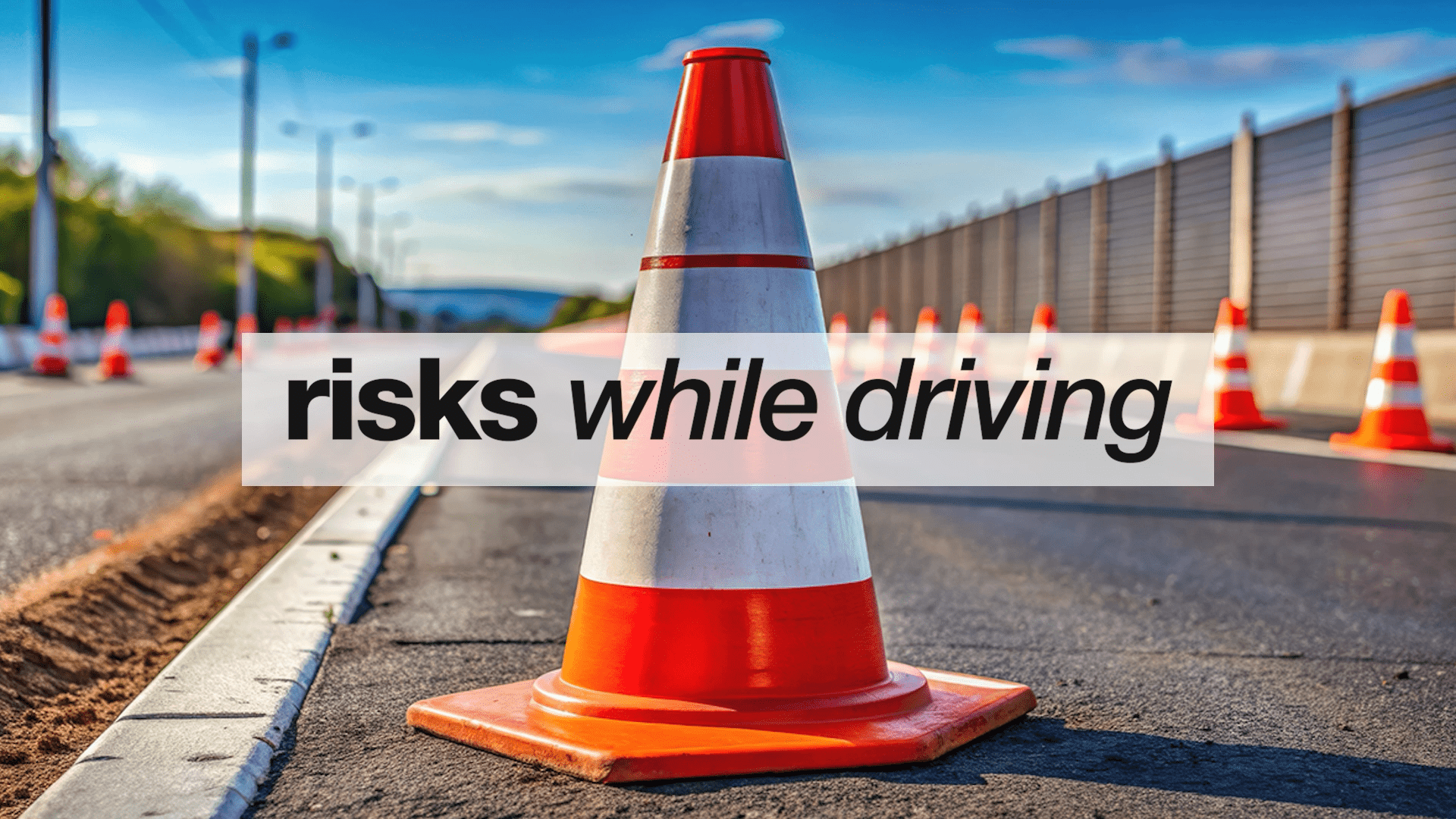
Understanding expressway driving is a significant step in your development as a driver, requiring new skills and heightened awareness compared to driving on city streets. Mastering proper techniques for entering, navigating, and exiting Texas expressways ensures your safety and confidence on high-speed roadways.
Texas expressways carry millions of vehicles daily at speeds up to 85 mph, making proper technique essential for preventing accidents and maintaining traffic flow. Whether you’re a new teen driver taking your first highway trip or an adult refreshing your skills on the expressway, mastering these fundamentals protects you and other drivers.
As a TDLR-approved driver education provider since 2004, Virtual Drive of Texas has extensive experience in teaching safe driving techniques on expressways. Our comprehensive curriculum, which covers Texas-specific highway laws and conditions, ensures you’re learning from the best.
This guide offers practical and proven strategies for safe expressway driving. From preparation and entry techniques to emergency procedures and traffic management, you’ll learn the skills you need for confident highway travel.
What is Expressway Driving?
Expressway driving involves operating a vehicle on limited-access highways, which are designed for higher speeds and greater traffic volumes than city streets or rural roads. These controlled-access roadways feature multiple lanes, entrance and exit ramps, and minimal interference from cross-traffic.
Texas expressways differ significantly from local streets in design and operation. Expressways have separation barriers between opposing traffic directions, standardized entry and exit points, and speed limits that typically range from 55 to 85 mph, depending on the location and traffic conditions.
The limited-access design means vehicles can only enter or exit at designated ramps, thereby eliminating the cross-traffic conflicts that are present on regular streets. This design enables higher speeds but requires different driving techniques, increased following distances, and enhanced situational awareness.
Key Differences from City Driving: Expressways require sustained higher speeds, longer reaction times, and different lane management strategies. Unlike city streets with frequent stops and starts, expressway traffic flows continuously with vehicles traveling at similar speeds.
Traffic merging and lane changing occur at much higher speeds, requiring precise timing and smooth vehicle control. The consequences of errors are typically more severe due to higher impact speeds and the potential for multiple vehicle involvement.
Texas-Specific Regulations: Texas expressway speed limits vary by region, with urban areas typically posted at 55-70 mph and rural interstates reaching 80-85 mph. These limits represent the maximum safe speeds under ideal conditions, and drivers must adjust their speeds accordingly to account for traffic, weather, and visibility.
Teen drivers face additional restrictions on expressways, including passenger limitations during the first six months of licensure and absolute prohibitions on using handheld devices while driving.

Preparing for Expressway Driving
Before entering any expressway, it’s crucial to conduct a comprehensive vehicle inspection, including tire pressure, brake function, fluid levels, and lighting systems. Highway driving stresses these systems more than city driving, making proper maintenance a non-negotiable.
Check all mirrors and adjust for optimal visibility, ensuring you can clearly see traffic in adjacent lanes and behind your vehicle. Clean windshields and properly functioning wipers become critical at highway speed, where vision impairment can lead to serious accidents.
Route Planning and Preparation: Study your intended route before departure to identify entry points, exit numbers, and any construction or traffic alerts. Knowing your exit number and approximate distance prevents last-minute lane changes that create dangerous situations.
Check current traffic conditions, weather forecasts, and construction updates that might affect your travel. Texas expressways experience significant traffic variations throughout the day, and planning helps you choose optimal travel times.
Before attempting expressway driving, ensure you’re well-rested and alert. High-speed driving requires sustained attention and quick reaction times, which can become impaired when drivers are fatigued.
Adjust seat position, mirrors, and climate controls before entering the expressway. Making these adjustments while driving at highway speeds creates dangerous distractions and reduces vehicle control.
Entering and Exiting the Expressway
Proper Entry Techniques: Use acceleration lanes to gradually increase speed until you match the flow of expressway traffic, typically reaching the posted speed limit before merging Entering significantly slower than the traffic flow creates dangerous speed differentials and forces other drivers to brake suddenly.
Activate your turn signal early while in the acceleration lane to indicate your intention to merge. Check mirrors, blind spots, and identify an appropriate gap in traffic before beginning your merge movement.
Safe Merging Procedures: Merge smoothly into the travel lane by using gradual steering inputs rather than sharp movements, which can destabilize your vehicle. Maintain steady acceleration through the merge to quickly match the traffic speed.
Never stop in an acceleration lane unless traffic is completely stopped. Stopping eliminates your ability to match the traffic speed and creates hazardous conditions for both you and the vehicles following you.
Expressway Exit Procedures: Begin planning for your exit several miles in advance, positioning yourself in the appropriate lane well before reaching the exit ramp. Last-minute lane changes across multiple lanes create serious collision risks.
Use the deceleration lane to gradually reduce speed after leaving the main travel lanes. Avoid slowing significantly while still in travel lanes, as this creates rear-end collision risks for following traffic.

Lane Management and Merging
Proper Lane Usage Principles: Texas follows the “keep right except to pass” principle, meaning slower traffic should use right lanes while left lanes are reserved for passing and faster-moving traffic. This system maximizes traffic flow efficiency and reduces conflicts between vehicles.
Use the leftmost lanes only when actively passing other vehicles or when traffic conditions require all lanes for capacity. Lingering in left lanes when not passing creates traffic backups and increases aggressive driving behaviors.
Advanced Merging Techniques: When merging into heavy traffic, look for gaps large enough to accommodate your vehicle without forcing other drivers to brake. A proper gap provides sufficient space both ahead and behind your vehicle after merging.
Adjust your speed in the acceleration lane to match available gaps rather than forcing your way into inadequate spaces. This technique requires scanning ahead to identify developing gaps and timing your approach accordingly.
Lane Change Safety: Execute lane changes using a systematic approach: check your mirrors, signal your intention, check your blind spots, and move smoothly when it’s safe. Complete the entire process quickly but without rushing individual steps.
Maintain awareness of vehicles in adjacent lanes that might also be changing lanes. Multiple vehicles changing lanes simultaneously create complex situations requiring careful coordination.
Speed and Following Distance
Appropriate Speed Selection: Maintain speeds appropriate for current traffic conditions, weather, and visibility rather than simply driving at posted limits. Posted speeds represent maximum safe speeds under ideal conditions with properly maintained vehicles and alert drivers.
Match the general flow of traffic when conditions permit, but never exceed safe speeds for your skill level or vehicle capabilities. Driving significantly slower than the traffic flow can be as dangerous as excessive speed when it creates speed differentials.
Following Distance Calculations: Use the three-second rule as a minimum following distance at expressway speeds, increasing to four or five seconds in adverse conditions. This distance provides sufficient reaction time and braking distance for most emergencies.
Measure the following distance by selecting a fixed object ahead and counting seconds between when the lead vehicle passes it and when you pass the same point. Adjust your speed to maintain proper spacing rather than relying on other drivers to maintain distance.
Speed Management in Various Conditions: Reduce speeds in rain, fog, or other weather conditions that affect visibility or traction. Wet roads require longer braking distances, while fog dramatically reduces your ability to see hazards ahead.
Construction zones often require significant speed reductions and increased following distances due to narrowed lanes, equipment obstructions, and the presence of workers. These temporary conditions change frequently and require constant attention.

Handling Traffic and Emergencies
Heavy Traffic Navigation: Maintain steady speeds and avoid frequent lane changes when traffic is congested. Constant lane switching rarely saves significant time and increases collision risks while contributing to overall traffic disruption.
Anticipate traffic flow changes by watching the brake lights of several cars ahead and adjusting your speed gradually, rather than braking hard when traffic slows. This technique helps prevent the accordion effect that worsens congestion.
Emergency Response Procedures: If your vehicle breaks down, safely exit the traffic lanes using your emergency flashers and pull onto the shoulder as far to the right as possible. Exit the vehicle from the side away from traffic and wait for help in a safe location.
When witnessing an accident, prioritize your own safety by slowing down and moving away from the incident area. Texas’s Move Over Law requires drivers to change lanes away from emergency vehicles or significantly reduce their speed when lane changes aren’t possible.
Tire Blowout and Mechanical Failures: Maintain vehicle control during tire blowouts by gripping the steering wheel firmly, avoiding sudden braking, and gradually reducing speed while moving toward the shoulder. Sudden reactions often cause loss of control and additional accidents.
Use emergency flashers immediately when experiencing mechanical problems and try to safely reach the shoulder. If you cannot exit traffic lanes, stay in your vehicle with flashers activated until help arrives.
Expressway Driving Tips for Teen Drivers
Building Confidence Gradually: Start expressway practice during low-traffic periods such as mid-morning or mid-afternoon on weekdays. These conditions allow you to focus on fundamental techniques without the pressure of heavy traffic or aggressive drivers.
Practice on shorter expressway segments initially, gradually increasing the distance and complexity as your skills improve—master basic entry, lane changes, and exits before attempting longer trips or peak-hour driving.
Supervised Practice Recommendations: Practice expressway skills with an experienced driver who can provide guidance and take control if necessary. This supervision helps you develop good habits while building confidence in a safer environment.
Discuss scenarios and decision-making processes with your supervising driver, learning to anticipate problems and plan responses. This mental preparation improves your ability to handle unexpected situations independently.
Focus and Distraction Management: Eliminate all unnecessary distractions during expressway driving, including loud music, phone use, and conversations that divert attention from driving tasks. Highway speeds leave little margin for error when attention wavers.
Develop scanning techniques that keep you aware of traffic in all directions, including vehicles several positions ahead and behind. This awareness helps you anticipate lane changes, braking, and other traffic movements more effectively.

Common Mistakes to Avoid
Frequent Entry and Exit Errors: Never attempt to merge at significantly slower speeds than prevailing traffic flow. This speed differential forces other drivers to brake hard and creates dangerous accordion effects throughout traffic.
Avoid cutting off other vehicles when merging or changing lanes by ensuring adequate gap space. Forcing your way into tight spaces often results in aggressive responses from other drivers and increases the risk of collisions.
Lane Management Problems: Don’t linger in left lanes when not actively passing other vehicles. This behavior frustrates other drivers, reduces traffic flow efficiency, and often leads to dangerous tailgating situations.
Avoid making multiple rapid lane changes to gain small advantages in heavy traffic. These movements rarely save significant time while dramatically increasing your accident risk and contributing to overall traffic disruption.
Speed and Following Distance Issues: Never tailgate other vehicles, regardless of traffic conditions or time constraints. Inadequate following distance prevents proper reaction to emergencies and often results in rear-end collisions.
Avoid using cruise control in heavy traffic, adverse weather conditions, or construction zones where you need to make immediate speed adjustments. Manual speed control provides better responsiveness to changing conditions.
Corrective Strategies: Practice proper techniques in low-stress environments until they become automatic responses. Muscle memory, developed through repetitive practice, helps you react correctly in high-pressure situations.
Focus on smooth, gradual inputs for all vehicle controls, including steering, acceleration, and braking. Sudden movements often destabilize vehicles, reducing your ability to maintain control during emergency maneuvers.
Conclusion
Expressway driving requires mastering new skills, including proper merging techniques, lane management, speed control, and emergency response procedures. These abilities develop through practice, preparation, and understanding of Texas-specific highway regulations and conditions.
Success on expressways depends on preparation, situational awareness, and defensive driving techniques that anticipate problems before they develop. Gradual skill building in low-stress environments creates the foundation for confident highway travel in all conditions.
Remember that expressway driving skills continue to develop throughout your driving career as you encounter new situations and traffic patterns.

Master Expressway Driving with Expert Training
Virtual Drive of Texas offers comprehensive driver education that includes detailed instruction on expressway driving, helping you develop the skills and confidence necessary for safe highway travel.
For Teen Drivers: Build essential highway skills through our Texas Parent-Taught Driver’s Ed course with comprehensive coverage of expressway safety and techniques.
For Adult Drivers: Refresh your knowledge of highway driving with our Texas Adult Driver Education course, which includes current laws and best practices.
Essential Safety Resources:
- School Zone Speed Limits – Understanding speed regulations
- Defensive Driving Techniques – Advanced safety skills
- Wet Weather Driving Tips – Expressway safety in adverse conditions
- New Driver Safety Guide – First-year success strategies
Need Additional Support? Learn about Texas teen driving laws and speed control techniques that apply specifically to driving on expressways.
Ready to build confidence and skills for safe expressway driving? Contact Virtual Drive of Texas today for comprehensive driver education that prepares you for all Texas roadway conditions.

